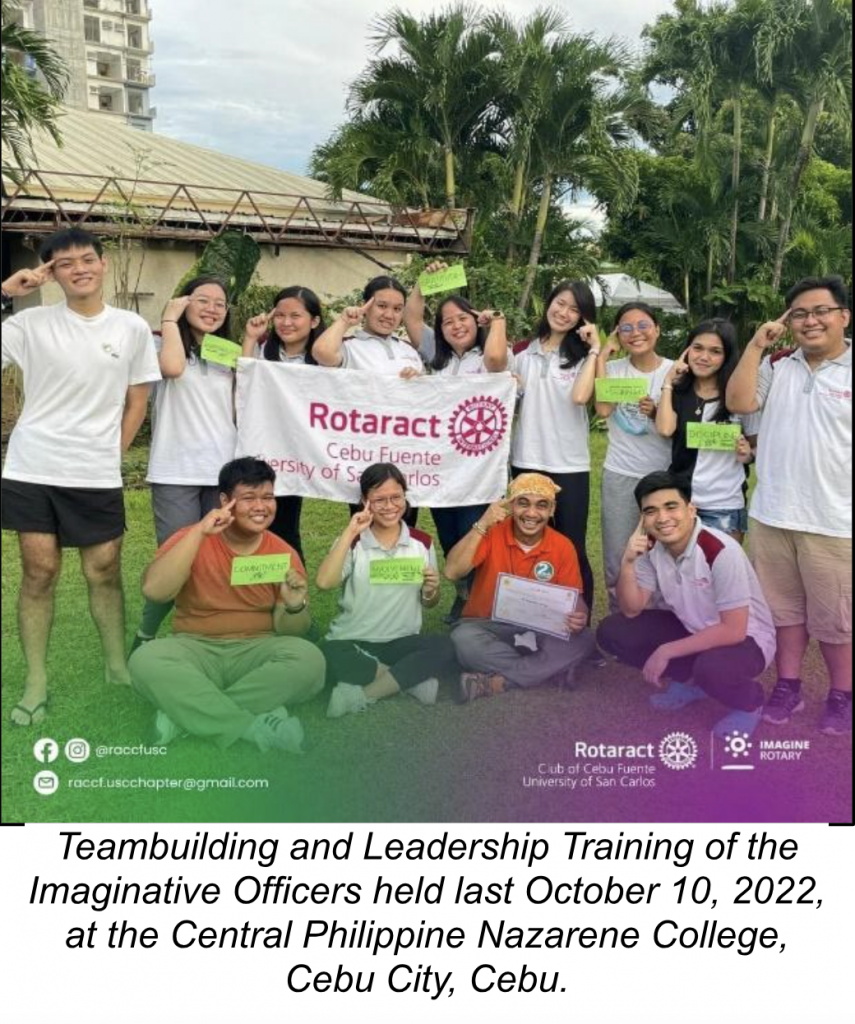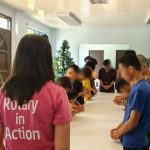When we were children, we were thought how to dream. We were told how dreams give us hope; how dreams keep us going in life. But when we grow up, it’s time to learn if we want to make our dreams come true, we need to wake up and face reality – the reality that dreams will never work until we do. And thus, we exert effort, we face the challenges that arise, and we grow through what we go through. And oftentimes, throughout this growth, we’ll feel uncomfortable. But that doesn’t mean growth is a bad thing.
I became the President of our Rotaract club on my last year of college. I felt afraid. The responsibility of a president was different from that of a member. I still have much to learn from the people around me in terms of leadership. But what made me accept the challenge was the belief that growth takes place where our comfort zone ends. And this applies to organizations.
I dove deep into the world of Rotary and Rotaract when I assumed presidency. And in doing so, I came to know its strengths and weaknesses: projects are well-intentioned but sometimes lack sustainability and measurability of its impact; members grow every year yet clubs struggle to maintain the number of active ones by the end of the term; and officers are open to changes in technology, trends, and best practices but implementation of such is difficult and takes much effort. This is the reality we need to face. But thankfully, Rotary’s dreams of a peaceful and polio-free world are not distant. Why? Because Rotary is facing its realities and addressing them.

In the last few years, Rotary has begun implementing its four strategic priorities: (1) increasing its impact; (2) expanding its reach; (3) enhancing participant engagement; and (4) increasing its ability to adapt. It has been improving its ability to achieve and measure impact by using tools and strategies; building awareness of its impact and brand through its People of Action campaign; providing leadership development and skills training through its programs and offerings; and increasing its ability to adapt by cultivating a culture of research and innovation through the use of surveys and consultations.
But these are organizational-level solutions, how about member-level solutions? The answer is in empowering our members. When we involve our members and officers every step of the way, we show them how much potential they have; and thus, awake within them the same passion for service that we have within ourselves. The passion for service that is evoked whenever we see the smile of the children we helped; whenever we hear the warm words of thanks from a grandmother we assisted, and whenever we feel the warmth of a hug from our fellow officers and members for a job well done. In all these, we might think, will empowering one person even be able to contribute to the change of an international organization made up of thousands of members across a number of countries? Yes. Because true change starts from the roots, true change starts within ourselves.

When we began this Rotary year, we Imagined Rotary. We imaged a world where children have a chance at education and are free from polio; where families have access to health care and given equal opportunity earn; where communities have access to clean water; where our environment is taken cared of; and where the world is at peace. We learned to imagine then. Now, we learn to turn it into reality through careful planning and intentional executions. As Antoine St. De Exupery, author of The Little Prince, said, “A goal without a plan is just a wish.” So fellow Rotaractors, may we not end our journey in Rotaract with only a well of wishes but a handful of realized dreams. Today, we imagine. But tomorrow, we achieve a better world through Rotary and Rotaract.




